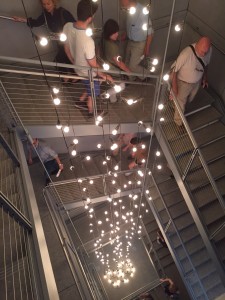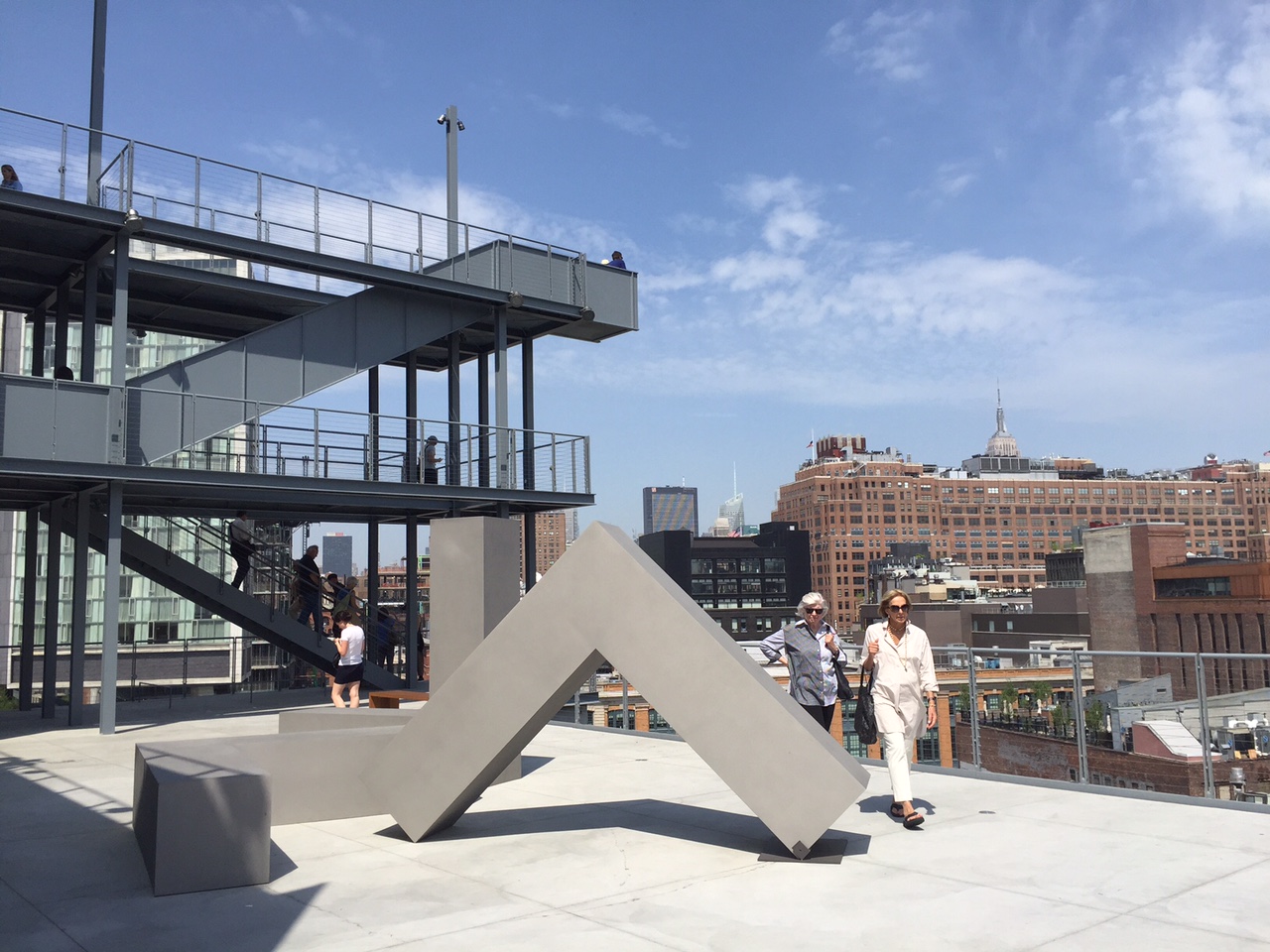Architecture
Seven years, half a billion dollars: Welcome to the new Whitney Museum of American Art
Perched in between the Hudson River and the High Line, the Whitney Museum of American Art‘s new home is a statement amid what’s considered to be the world’s hub of contemporary art — a statement that was seven years in the making thanks to a capital campaign that reached nearly half a billion dollars.
The nine-story structure designed by Renzi Piano — a name synonymous with the aesthetics of Centre Pompidou — comprises 50,000 square feet of indoor gallery space and 13,000 outdoors, a sizable expansion from its former Manhattan Upper East Side, which closed in October 2014 to prepare for the relocation to the Meatpacking District.
Was it all worth it?
Weingarten Art Group principal Lea Weingarten recently visited the Whitney. Below are her thoughts.
Q: One never has a second chance to make a first impression. So let’s begin with the exterior. Thoughts?

A light installation by Felix Gonzales Torres activates the stairwell.
A: Clumsy, modular and somewhat atonal with one exception: The terraces are supremely wonderful. They not only provide one of the most spectacular 360 degree views of Manhattan (High Line, Hudson and Lower Manhattan), but also are gracious enough to function as true outdoor art environments. Candidly, they are as easy — if not easier — to navigate from floor to floor than the elevators.
Q: Once inside, what’s the viewer experience?
A: A triumph of space planning and the future of museum installation. One space flows into the next seamlessly as one is pulled through the exhibitions without “museum fatigue.” Exterior spaces, interior stairs, elevators and gracious transitions all create the feeling of constant yet unhurried motion.
Q: What does the move mean for the art itself?
A: Never have so many Whitney treasures been on view at any one time, pairing highly meritorious obscure artists alongside iconic works and holding their own — completely. The biggest takeaway: Women artists are celebrated, with many of my favorites, including Lee Bontecou, Louise Bourgeois, Agnes Martin, Lee Krasner and Eva Hesse.
Q: Each building has its own energy. How would you describe the vibe of the Whitney’s new home?
A: Universal. The diversity and appeal of visitor’s ages and cultural backgrounds are as varied as any Louvre or Tate audience would be. This is an everyman museum — with works that are highly accessible and works that are highly conceptual.
Q: What sticks in your mind from your visit?
A: All-gender restrooms are on every floor. The artist Richard Artschwager (known for his iconic box-like sculptures) designed each elevator in the same fashion. There are 63,000 square feet of exhibition space — interior and exterior.
